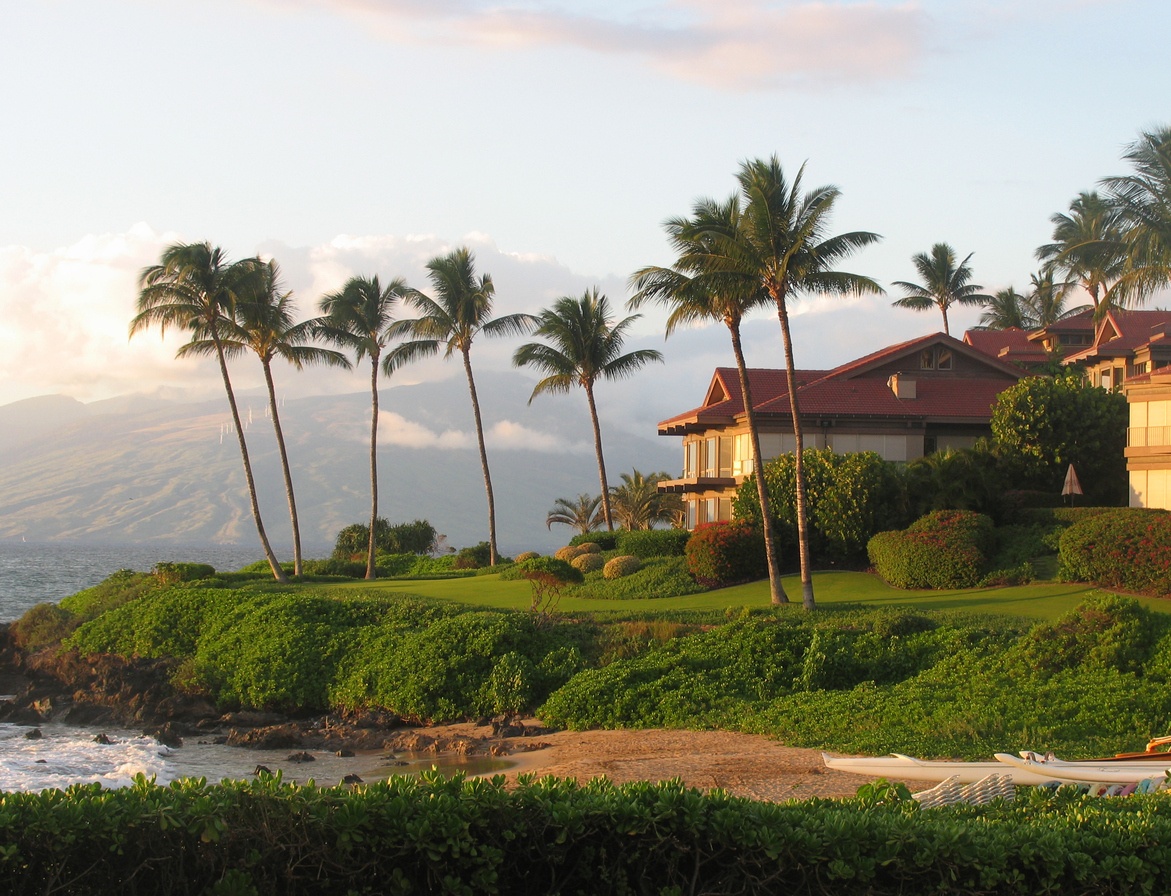With so many home financing options available, it’s hard to know where to begin! We sought the advice of some lending professionals in Hawaii to help guide you and determine if either the FHA or USDA home loan programs might be a fit for you. Home loans provided by the Federal Housing Administration (FHA) and the United States Department of Agriculture (USDA) are pretty common options for Hawaii home buyers. Both types of loans offer competitive interest rates to borrowers. The main difference is that USDA loans are restricted to rural areas, whereas FHA loans can be had for homes in any part of the islands. Also, USDA loans are targeted for low- to moderate-income families. Finally, both USDA and FHA loans are guaranteed by the federal government. This means that if a borrower should default at any point, the government will step in and repay a portion of the loan to the lender or bank. Here are a few more of the key differences and considerations when shopping for a home loan.
USDA Loans
Okay, you might think of rural as farmland in Iowa. The Department of Ag, after all, would seemingly be funding agriculture land, no? But here in Hawaii, that’s not quite the case. Nothing is really all that remote, and there are properties deemed “rural” that are well within commuting distance of Honolulu, for instance. A quick look at the USDA property map and you’ll see that there are some really desirable locations that fall under the rural category in this state. Isn’t just about everything desirable in Hawaii, with our near-perfect climate and laid-back lifestyle? We certainly think so!
Don’t let the “department of agriculture” thing fool you! For the most part, the areas that are ineligible for a USDA rural home loan are centered immediately around Honolulu and Kailua on Oahu, and around Hilo on Hawaii Island. Pretty much everything else is fair game. The two primary USDA loans are known as the Single Family Housing Guaranteed Loan Program and the Single Family Housing Direct Loan Program, but for the purposes of direct comparison with FHA home loans, we’ll talk about the first of these two. The property map for each of these programs can be accessed by clicking here and then choosing the different loan programs from the top navigation bar.

Here are some of the advantages of financing through the Single Family Housing Guaranteed Loan Program:
- Even low-income families can qualify
- Qualified borrowers can buy a home with no down payment, resulting in little or no upfront costs — USDA financing is available to qualified borrowers for up to 102% of the home’s appraised value, in order to cover the 2% funding fee charged by the USDA
- USDA loans come with a very low monthly mortgage insurance premium of just .35% in Hawaii
- The loan terms offered are fixed-rate, 15- or 30-year terms. So if you want to stretch your mortgage over 30 years, you can do so and keep your mortgage payment low
- The USDA does not offer adjustable-rate mortgages.
- The loans are government-backed or guaranteed
- Debt-to-income qualifying ratios to secure a USDA home loan are a lot lower than for FHA loans and can be as low as 29/41 (see our sidebar on debt-to-income ratios, below)
- The USDA loan program does not limit the amount that a homeowner can borrow. However, most lenders conform to the loan limits set forth by Fannie Mae and Freddie Mac. Since Hawaii is full of high-cost counties, these loan limits are higher here than in most parts of the country. For more on this, please refer to our post entitled “So You’re Buying Your First Home”, where we discuss some other lending options available to first-time buyers. For the purposes of this post, the home loan lending limits are laid out in this table, by county:
| County | GSE one-unit limit |
| Hawaii | $636,150 |
| Honolulu | $721,050 |
| Kalawao | $657,800 |
| Kauai | $713,000 |
| Maui | $657,800 |
Debt-to-Income Ratio Calculations:
Okay, here’s a little sidebar about debt-to-income ratios and how to calculate yours. For the USDA example, multiply your monthly gross income by 29 percent to arrive at the maximum mortgage payment you can afford under USDA qualifying requirements. Multiply your monthly gross income by 41 percent to calculate what’s called your back-end ratio. The back-end ratio is the maximum percentage of your gross monthly income that can be applied to your total debt payments under a 29/41 home loan. This debt service includes your mortgage, plus all your other monthly expenses, like your car and student loans, credit card payments and other monthly payments combined.
For example, for the sake of round numbers, let’s say your gross family income is $120,00 year, or $10,000/month before taxes and other deductions. Your maximum mortgage payment would be 10,000 x 0.29 = $2,900. This would likely be your maximum borrowing amount and must include your mortgage principal and interest, mortgage insurance and property taxes.
However, your ultimate borrowing limit also depends upon your other debts and expenses. Essentially, for a USDA loan, your total monthly expenses cannot exceed 41% of your gross family income, which in this example would be 10,000 x 0.41 = $4,100. So if you have lots of other debts and bills to pay monthly – if you have racked up a $200,000 student loan debt, for example – then that $2,900 might need to be adjusted downward to accommodate your other monthly payment obligations, in order to keep them all within the $4,100 cap.
Now here are a few of the caveats regarding USDA loans:
- Your income cannot exceed 115% of the median income in your area. So, for example, if the median family income on Kauai is $62,946, those families earning more than $72,387.90 would not qualify for a USDA home loan.
- Homes financed through the USDA programs must be modestly priced and would, by definition, also be modest in size. Since these loans are geared toward helping lower income families, it makes sense that the USDA wouldn’t then finance those families beyond their means. So the multi-million-dollar beach house you’ve been eyeing probably isn’t a good fit for this type of financing, despite the fact that you’ve dreamed of it all your life.
- USDA loans add a 1% funding fee on to your loan, which we suspect would help support the loan administration, as well as USDA loan programs for future borrowers.
FHA Loans
Unlike USDA loans, there aren’t any defined geographical regions or restrictions around FHA-insured home loans. FHA credit and income requirements can generally be a little higher than for USDA home loans. Additionally, an FHA-insured loan usually requires at least a 3.5% down payment and carries a higher monthly mortgage insurance premium. Down payments of as much as 10% can be required, in fact, based on the buyers’ credit rating. However, a credit score over 580 meets the 3.5% down-payment guidelines. Finally, there’s a funding fee of 1.75% for FHA-insured loans, whereas it’s just 1% of the purchase price for USDA loans.
The upside is that the qualifying debt-to-income ratio for FHA loans can go as high at 47/57 (so 47% of your gross monthly income can be applied to your mortgage, with as much as 57% being applied to your monthly debt service, as a whole).
Finally, the FHA sets maximums on the amount that the federal government will insure. Those maximums are listed in the table, below, and you may notice that they differ slightly from the maximums set forth by government-sponsored entities (GSEs) Fannie Mae and Freddie Mac. A lender may be willing to lend you MORE than the maximums listed, but in that instance, you may be required to put more than 3.5% down and your lender will also want to see that you’re qualified through income, assets and credit history to make that happen for you.
We hope we’ve clarified some of the the key differences between USDA and FHA home financing. As with any financial transaction of this size and scope, we recommend that you consult with a certified lending professional who has made a career of understanding the complex world of home financing, and who keeps abreast of all the latest laws and best options, in order to find the very best fit for you and your family. Our team of professional realtors is here to serve your needs and we’d be happy to advise and guide you through your home buying process, in order to make it as smooth and stress-free as possible.
| County | FHA one-unit limit |
| Hawaii | $368,000 |
| Honolulu | $721,050 |
| Kalawao | $657,800 |
| Kauai | $713,000 |
| Maui | $657,800 |
Additional Resources
Five Good Reasons to Get a Pre-Approved Mortgage
Tips for Buying a Home in Hawaii
So You’re Buying Your First Home
VA Lending in Hawaii

James Clawson
April 14, 2019
Question…my contract says i pay 50k cash and 310k loan. I want to roll part down payment and closing costs into loan. Appraised value is 385k. Can i legally do this? Thank you